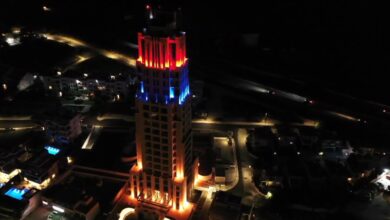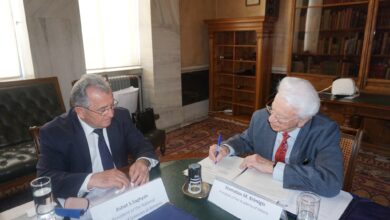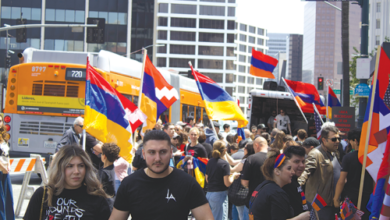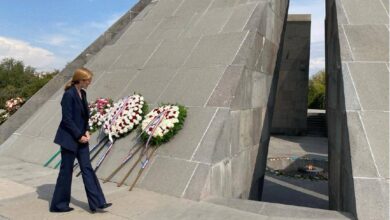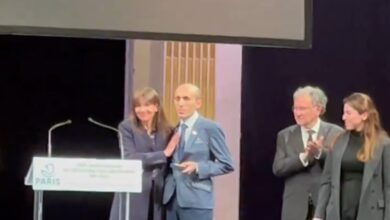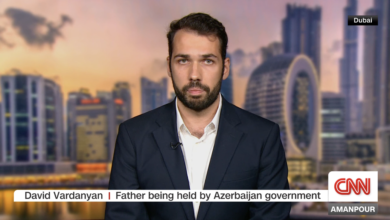Rug woven by orphaned survivors of the Armenian Genocide to go on display

A rug woven by orphaned survivors of the Armenian Genocide will be on display during a Sunday fundraiser to establish a local museum for historical relics, the Los Angeles Times reports.
The intricate 6-foot-by-4-foot piece is comprised of more than half a million double knots — a well-known technique among Armenian weavers — and bears a personalized inscription dedicated to a generous donor.
“This was given to people, Americans, who felt compassionate about the genocide that had occurred in western Armenia and went off to provide relief and aid, and these orphans gave [the rugs] as gifts,” said Andy Torosyan, chairman of the Lark Musical Society in Glendale and the rug’s current owner.
The society is a small, private music school that’s looking to convert an existing 4,000-square-foot building into an Armenian cultural museum to house, in addition to the rug, a coin from the reign of King Tigran the Great and old handwritten Bibles.
The rug was crafted in the early- to mid-1920s by young girls living at the Ghazir Orphanage in Lebanon. While most were made and sold to sustain the orphanage, a few were dedicated to those who made significant contributions through the Near East Relief Society, which helped more than 100,000 Armenians after the genocide.
The rug was made out to “Mrs. D.W. Williams,” and the words were written in English.
Girls at the orphanage, as young as 12, learned how to weave in order to find work easily after they were released. They were learning English, too, said Hratch Kozibeyokian, president of the Armenian Rugs Society.
In 1925, then-President Calvin Coolidge received a rug, which was put in storage for decades and hung on a wall at the White House Visitor Center last November after several failed attempts to hang the tapestry.
“When they brought Calvin Coolidge’s rug to the U.S., there were two girls accompanying the rug,” Kozibeyokian said. “They had a long meeting with President Coolidge and the First Lady back and then and they communicated in English.”
However, little is known of what became of Torosyan’s rug after it was made. It surfaced at an auction in the early 1980s and was bought by Hagop Martin Deranian. He hung onto it for decades until he sold it to Torosyan.
The rug’s condition is immaculate, Kozibeyokian said. If good upkeep is maintained, he said, it could last for another 1,000 years.
“The condition is pristine,” he said. “It’s as if it was made yesterday.”
Kozibeyokian, who’s also known for his restorative work on rugs, made very minor repairs on the orphan carpet.
The Lark Musical Society’s fundraiser will be held from 5 to 9:30 p.m. on Sunday at the Jonathan Club, 545 S Figueroa St, Los Angeles.
Tickets for the black-tie event are $200 and can be obtained by calling Torosyan at (703) 328-0818. There will be a dinner, live music and entertainment, as well as traditional Armenian dresses on display.
The society has already applied for permits to do some structural work for the museum, but further fundraising is needed for later phases, Torosyan said.
“The purpose of the museum is for it to be a dedicated place for the ancient cultural heritage that Armenians have … We want to display it to the Los Angeles community,” he said.


